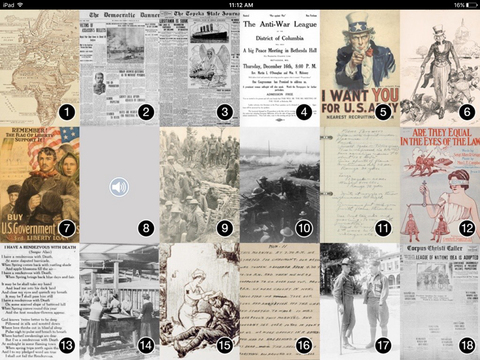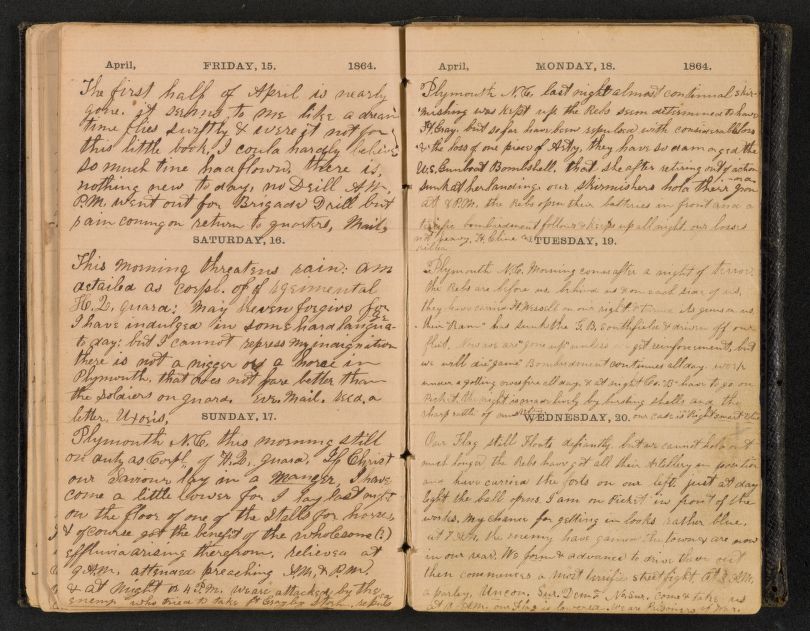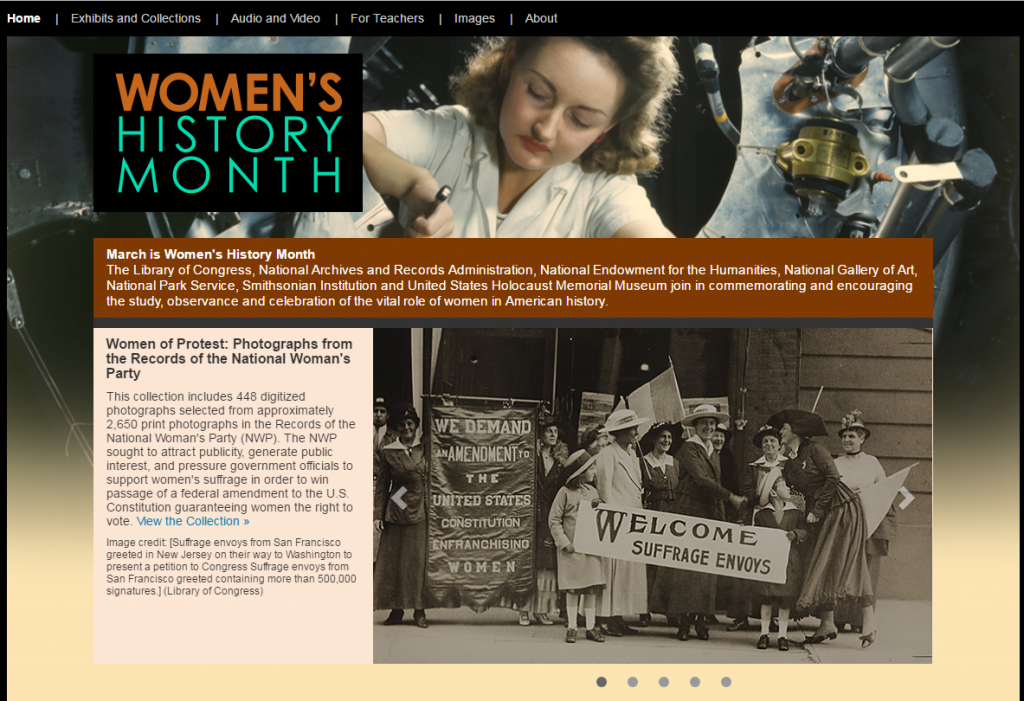The following is a guest post by William Kellum, manager in the Library’s Web Services Division.
Since the last installment in this blog series, published in mid-March, quite a few new offerings have been added to the Library’s website.
Women’s History Month
March was Women’s History Month, and we updated the site we maintain in collaboration with the National Archives and Records Administration, the National Endowment for the Humanities, the National Gallery of Art, the National Park Service, the Smithsonian Institution and the United States Holocaust Memorial Museum with new content and an all-new visual design.
Presidential Papers
The Library’s Manuscript Division holds the papers of 23 of America’s presidents, from George Washington to Calvin Coolidge. Making its online debut is the Franklin Pierce Papers Collection. Pierce (1804–69), was an army officer, representative and senator from New Hampshire and the 14th president of the United States. His papers contain approximately 2,350 items dating from 1820 to 1869. They include correspondence, a photostatic copy of a diary Pierce kept while serving in the Mexican War, drafts of his messages to Congress and an engraved portrait. Pierce’s correspondence relates chiefly to his service in the Mexican War, public affairs and national politics.
Millard Fillmore (1800–74) isn’t included in the Library’s main Presidential Papers Collection because most of his papers are held by the Buffalo and Erie County Historical Society in Buffalo, New York. But the Fillmore papers the Library does hold are now available for the first time on loc.gov. Fillmore was an educator and served as U.S. representative from New York, vice president and the 13th president of the United States. The online papers contain approximately 35 items spanning the years 1839 through 1925, with the bulk dating from 1839 to 1870. The papers include correspondence relating primarily to political issues such as slavery, the Compromise of 1850, the Fugitive Slave Law of 1850, the Kansas-Nebraska Act, John Brown’s 1859 raid on Harpers Ferry, West Virginia, and congressional politics.
National Recording Registry
The Library’s National Recording Registry is one of our most popular initiatives, routinely attracting wide press coverage and setting off some lively debates. Additions for 2016, announced in March, include Sonny Rollins, Judy Garland, Vin Scully, Wes Montgomery, Wilson Pickett, David Bowie, N.W.A and more.
{mediaObjectId:'4AE08B5CAAD20146E0538C93F1160146',playerSize:'mediumStandard'}
For Teachers
In conjunction with the Library’s major program to commemorate the 100th anniversary of the U.S. entry into World War I, a new World War I primary source set and teacher’s guide for classroom use is now available. The materials are also accessible in our student discovery set format for iPad through Apple iBooks.

The World War I primary source set is available as a student discovery set, optimized for iPad.
From the Music Division
Albert Schatz (1839–1910) was a German music dealer with a lifelong interest in opera and its history. He traveled throughout Europe to collect opera libretti, including many first and early Italian, German and French editions from the 17th and 18th centuries. In the end, the Albert Schatz Collection totaled 12,000 operatic and 238 oratorio and cantata libretti. The scope of this digital presentation comprises all 12,238 Schatz libretti.
Civil War
Adding to our extensive online Civil War materials, the papers of Union soldier Samuel J. Gibson (1833–78) consist of a diary he kept while serving with Company B, 103rd Pennsylvania Infantry Regiment, and a letter he wrote to his wife while being held at the Confederate prisoner-of-war camp in Georgia commonly known as Andersonville. The diary documents the capture of the federal garrison at Plymouth, North Carolina, in April 1864, and Gibson’s experiences as a prisoner of war at Andersonville and in Florence, South Carolina. Gibson records war news and rumors received by the prisoners, the state of his physical and emotional health, the deaths of fellow prisoners and the importance of his diary in maintaining a sense of time.

Samuel Gibson’s diary includes details such as these entries from April 1864 in which he describes an onslaught by Confederate troops that ended in his capture.
18th-Century Socialite
The seven volumes of diaries and notebooks of Anna Maria Brodeau Thornton (ca.1775–1865) document her position at the center of a Washington, D.C., social circle that included George and Martha Washington, James and Dolley Madison, Thomas Jefferson, Margaret Bayard Smith and the cabinet members, congressmen and diplomats who constituted the city’s entwined social and political worlds. These volumes document the operation of her household, including the management of slaves; travel, including visits to the Virginia homes of George and Martha Washington, Thomas Jefferson and James and Dolley Madison; the construction of Washington, D.C., and the United States Capitol; the city under attack during the War of 1812; visits of the Count de Volney, 1796, and Alexander von Humboldt, 1804; an attempt on her life by Arthur, a slave, in 1835; the 1844 shipboard explosion that killed Secretary of State Abel Upshur and Treasury Secretary Thomas Gilmer; the inauguration of president James K. Polk in 1845; and the start of the Civil War.
The Library’s online presence goes back to the early 1990s, so upgrading and enhancing content that uses old technologies or presentations is a regular part of our work. Newly upgraded presentations include content related to the National American Woman Suffrage Association; the Vietnam-Era POW/MIA Database; and American Leaders Speak: Recordings from World War I (Nation’s Forum).















